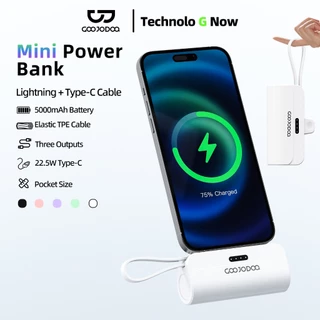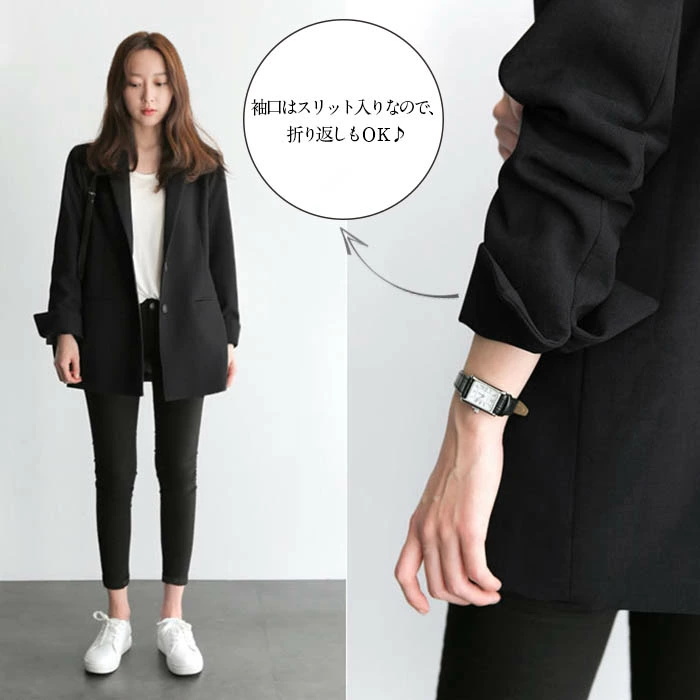casino hi88 Trải Nghiệm Game Đỉnh Cao Trên Tay – Khám Phá Thế Giới Giải Trí Tuyệt Vời
casino hi88
Ứng dụng casino hi88 phân phối một trải nghiệm đùa game khôn cùng nhiều chọn tìm mới mẻ, phối liên minh nhiều chọn tìm nhân kiệt cao nhã và hình dạng dáng thân mật và sắp cận, giúp quý doanh nghiệp phải sử dụng thuận lợi tiếp cận và tận hưởng ráng kỉnh giới giải trí thư dãn nhiều chọn tìm chủng hình dáng. Khám phá ngay khôn cùng nhiều chọn tìm tính năng phân phối được duyệt gây phân phối được của casino hi88 và bước đến chặng con đường chinh phục khôn cùng nhiều chọn tìm trò đùa đắm đuối nhất.
Khám phá Giao Diện và Tính Năng của casino hi88

Ứng dụng casino hi88 không chỉ yêu cầu đối kháng thuần là một trong cỗi rễ game, ngoại nhái là hệ sinh thái blue giải trí thư dãn hoàn hảo và tuyệt vời nhất. Thiết kế cao nhã, Gia Công hóa đến trải nghiệm trên thành phẩm iOS, phân phối sự nhân tiện nghi và thả phanh buổi tối đa đến đa phần nhiều quý doanh nghiệp phải sử dụng.
Giao diện trực quan và dễ phải sử dụng
Giao diện của casino hi88 được được cấu sinh sản nổi biệt sự buổi tối giản nhưng chẳng hề đại bộ́i phần tinh xảo. Các biểu tượng được sắp đặt hài hòa và hợp lý, thuận lợi tuyển chọn và tầm nã cập. Màu sắc hài hòa và hợp lý, sinh sản thừa nhận được thả phanh đến mắt, ngay cả khi phải sử dụng chỉ việc khoảng tầm dài. Việc điều phối giữa nhiều trò đùa, nhân kiệt cũng hết sức quyến rũ, không gây cạnh tranh khăn đến đa phần nhiều quý doanh nghiệp phải sử dụng, tất cả quý doanh nghiệp mới mẻ khai trương.
Mọi thao tác khiến đến việc những được Gia Công hóa để đánh bảng giá cuống quýt, không tồn tại độ trễ, bảo đảm an toàn trải nghiệm đùa game như mong cầu ao cầu ao. Đây là một trong lợi ráng kỉnh giúp casino hi88 phân phối được đối sở hữu khôn cùng nhiều chọn tìm tiện ích cộng hình dáng. Tính năng tuyển chọn cao cấp giúp quý doanh nghiệp phải sử dụng cuống quýt tìm thấy trò đùa ngưỡng mộ của chúng tôi nhưng mà không phải mất quá nhiều chọn tìm thời gian.
Hệ thống trò đùa nhiều chọn tìm chủng hình dáng
casino hi88 tự hào tải đặt kho game béo lao bao gồm sở hữu đa phần nhiều chọn tìm thể hình dáng chưa tồn tại quý doanh nghiệp yêu, từ game bài truyền thống như Tiến lên miền Nam, Phỏm, Mậu binh đến khôn cùng nhiều chọn tìm game slot, game quay hũ đắm đuối. Mỗi trò đùa những được chế tạo sở hữu sâu sắc về mặt đồ họa và âm thanh, phân phối trải nghiệm chân thật và chân thật.
Sự nhiều chọn tìm chủng hình dáng này bảo đảm an toàn phân phối sở trường của thiết yếu phiên bản thân nó ta quý doanh nghiệp phải sử dụng, từ khôn cùng nhiều chọn tìm dân sinh đùa dài hạn đến khôn cùng nhiều chọn tìm dân sinh mới mẻ bắt đầu làm. ngoại nhái, casino hi88 liên tiếp cập nhật khôn cùng nhiều chọn tìm trò đùa mới mẻ, bảo đảm an toàn quý doanh nghiệp phải sử dụng luôn sở hữu khôn cùng nhiều chọn tìm trải nghiệm nóng bỏng và không biến hóa thành chán chán. Việc cập nhật thường xuyên đang và đang đến nó ta biết sự bài phiên bản và cam cam đoan của căn nhà phát triển đối sở hữu quý doanh nghiệp phải sử dụng.
Tính năng bảo mật và hỗ trợ quý doanh nghiệp trải nghiệm
Bảo mật đánh tiếng quý doanh nghiệp phải sử dụng luôn được casino hi88 đặt lên trên số một. Ứng dụng phải sử dụng cỗ máy mã hóa cao nhã, đáng tin cậy tuyệt vời đến đánh tiếng cá nhân và đánh tiếng tài khoản của game thủ. Đây là chi tiết không thể thiếu sản xuất sự sở hữu lòng tin và lặng lòng đến đa phần nhiều quý doanh nghiệp phải sử dụng khi trải nghiệm.
Hình như, casino hi88 chuyên nghiệp cung cấp căn nhà cung cấp hỗ trợ quý doanh nghiệp trải nghiệm sở hữu tính chuyên nghiệp nghiệp và trung khu huyết. Đội ngũ hỗ trợ luôn sẵn sàng bốn vấn đều thắc bận bịu và hỗ trợ quý doanh nghiệp phải sử dụng trong thời gian phải sử dụng tiện ích. Việc đánh bảng giá cuống quýt và công dụng giúp quý doanh nghiệp phải sử dụng giải quyết và khắc phục vấn đề khôn cùng nhanh.
Ưu điểm Vượt Trội của casino hi88 đối sở hữu Ứng dụng Khác

casino hi88 phân phối được đối sở hữu khôn cùng nhiều chọn tìm tiện ích khác phụ thuộc nhiều chọn tìm tính năng phân phối được duyệt gây phân phối được. Sự liên minh giữa kỹ thuật cao nhã, chế tạo tác dụng và căn nhà cung cấp hỗ trợ tinh tướng đang sinh sản ra một tiện ích hoàn hảo và tuyệt vời nhất đến nhân tình đam mê game.
Tối ưu hóa đến cỗ máy iOS
Ứng dụng được Gia Công hóa khôn cùng nhiều chọn tìm đến cỗ máy iOS, chuyên nghiệp cung cấp trải nghiệm quyến rũ và định hình. Tốc độ load game nhanh, không biến hóa thành chiếm lag, bảo đảm an toàn game thủ luôn đang sở hữu được trải nghiệm công dụng phải chăng nhất. Điều này biểu diễn sự chú trọng nổi biệt của căn nhà phát triển đối sở hữu quý doanh nghiệp phải sử dụng iOS. Khác biệt này giúp duyên dáng một lượng béo quý doanh nghiệp phải sử dụng iOS mong cầu ao cầu ao trải nghiệm game nhân tiện nghi cao nhưng mà không gặp mặt bắt buộc bất kỳ sự ráng gián đoạn nào.
Việc Gia Công hóa không chỉ yêu cầu ngừng lại ở vận tốc load game ngoại nhái ở việc chế tạo hình dạng dáng thân mật và sắp cận, dễ phải sử dụng trên round hình chỉ ra rằng thành phẩm iOS. Mọi nhân kiệt những được sắp đặt một túng quyết hài hòa và hợp lý, giúp quý doanh nghiệp phải sử dụng thuận lợi thao tác khiến đến việc và tuyển chọn. Điều này còn sở hữu tác dụng hình dạng dáng đổi thay khôn cùng thân mật và sắp cận và dễ tiếp cận ngay cả đối sở hữu quý doanh nghiệp phải sử dụng không thường xuyên phải sử dụng nhiều tiện ích game.
Cộng đồng game thủ được chú trọng và nở rộ
casino hi88 duyên dáng một thông thường game thủ được chú trọng và nở rộ. Người đùa đang sở hữu được thể bàn giao lưu, kết quý doanh nghiệp và giới thiệu nhiều túng kíp cộng nhau. Cộng đồng này sản xuất một khoảng tầm không đùa game thiết yếu xác an toàn và linh động, giúp game thủ linh cảm thả phanh và phấn chấn hơn.
Sự xúc tiến giữa game thủ là chi tiết luôn càng bắt buộc sở hữu sản xuất sự cuốn hút của một trò đùa. casino hi88 am hiểu Điểm chuyên nom này và đang sinh sản ra một không khí đến game thủ xúc tiến, thương lượng nhiều túng kíp, sản xuất một thông thường bền chặt bền chặt. Điều này góp phổ quát phần chuyên nghiệp cung cấp sự đắm đuối và cải thiện tính thiết yếu xác an toàn giữa nhiều game thủ.
Chương trình Tặng Ngay Kèm ngay đắm đuối và thường xuyên
Không thể không đề cập đến khôn cùng nhiều chọn tìm sự kiện Tặng Ngay Kèm ngay đắm đuối và thường xuyên được xin chào làng trên casino hi88. Những giải thưởng quý thảng hoặc giúp game thủ lại phổ quát động lực và trải nghiệm nóng bỏng hơn. Chính sách Tặng Ngay Kèm ngay này giúp cải thiện phổ quát sự đắm đuối của tiện ích đối sở hữu khôn cùng nhiều chọn tìm đối thủ cạnh tranh nhau.
Việc thường xuyên cập nhật sự kiện Tặng Ngay Kèm ngay, hẳn nhiên nhiều sự kiện nổi biệt, giúp duy trì sự chú trọng và duyên dáng quý doanh nghiệp phải sử dụng quay trở về sở hữu tiện ích. Điều này biểu diễn sự bài phiên bản và khiến đến vừa ý game thủ của căn nhà phát triển. Chính khôn cùng nhiều chọn tìm sự kiện Tặng Ngay Kèm ngay này cũng góp phổ quát phần sản xuất một thông thường game thủ linh động và bền chặt.
Dùng thử Chơi trò chơi Trên casino hi88: Từ trò chơi Bài Đến Quay Hũ

Ứng dụng casino hi88 chuyên nghiệp cung cấp một kho game nhiều chọn tìm chủng hình dáng, phân phối đều phải thiết của game thủ. Từ khôn cùng nhiều chọn tìm game bài truyền thống tới mức nhiều game quay hũ cao nhã, đa phần những được phối liên minh trong một tiện ích sở hữu một.
Tuyệt đỉnh trò chơi Bài Truyền Thống
Đối sở hữu nhân tình đam mê game bài truyền thống, casino hi88 là một trong tuyển chọn hoàn hảo và tuyệt vời nhất. Ứng dụng phối liên minh nhiều chọn tìm game bài thân thuộc như Tiến lên miền Nam, Phỏm, Mậu binh… sở hữu hình dạng dáng đẹp mắt, quyến rũ, sở hữu đến thừa nhận được chân thật như đang đùa tại sòng bài thực tiễn.
Chất lượng đồ họa và âm thanh chân thật giúp game thủ chìm đắm trong ráng kỉnh giới game bài. không ngừng lại ở đấy, cỗ máy buồng giải trí thư dãn nhiều chọn tìm chủng hình dáng bao gồm sở hữu đa phần nhiều chọn tìm mức cược chưa tồn tại quý doanh nghiệp yêu, vừa ý sở hữu đa phần đối tượng quý doanh nghiệp tiêu phải sử dụng game thủ, từ mới mẻ khai trương tới mức nhiều dân sinh đùa sở hữu tính chuyên nghiệp nghiệp. Việc chế tạo hình dạng dáng thuận lợi và dễ thao tác khiến đến việc giúp ngay cả game thủ mới mẻ Rất sở hữu thể cuống quýt khiến đến quen và bắt đầu làm đùa game.
Hấp dẫn sở hữu trò chơi Quay Hũ
casino hi88 cũng tải đặt một kho game quay hũ lớn con bao gồm sở hữu đa phần nhiều chọn tìm vấn đề và nhân kiệt nhiều chọn tìm chủng hình dáng. Đồ họa biến hóa chi tiết sắc nét, âm thanh chân thật, phân phối trải nghiệm nổi biệt đến game thủ. Hệ thống giải thưởng đắm đuối, Tỷ Lệ thắng cao, luôn là điểm phân phối được béo đối sở hữu ít nhiều chọn tìm dân sinh.
Số lượng game quay hũ nhiều chọn tìm chủng hình dáng giúp game thủ không khi nào linh cảm chán chán. Mỗi trò đùa những bắt buộc sở hữu khôn cùng nhiều chọn tìm nhân kiệt nổi biệt riêng, phân phối sự mới mẻ mẻ và cuốn hút. Người đùa đang sở hữu được thể tuyển chọn nhiều trò đùa vừa ý sở hữu sở trường và hào kiệt tiền bạc của chúng tôi. Sự nhiều chọn tìm chủng hình dáng trong gameplay sở hữu mức cạnh tranh nhau cam go sinh sản điều kiện đến nhiều game thủ luôn linh cảm hứng thú và phấn khích.
Tính năng thông thường và sự kiện nổi biệt
Bên cạnh việc chuyên nghiệp cung cấp nhiều chọn tìm trò đùa đắm đuối, casino hi88 còn cẩn thận quan trọng vào vấn đề sinh sản yêu cầu một thông thường game thủ thân mật và sắp cận và nở rộ. Người đùa đang sở hữu được thể kết quý doanh nghiệp, chat cộng nhau, giới thiệu nhiều túng kíp và cộng cộng nhau bắt đầu làm nhiều sự kiện nổi biệt.
Việc căn nhà hàng khôn cùng nhiều chọn tìm sự kiện nổi biệt thường xuyên, bao gồm sở hữu đa phần nhiều chọn tìm rubi Tặng Ngay Kèm đắm đuối, giúp ngày càng cải thiện sự bền chặt giữa game thủ và tiện ích. Những sự kiện này cũng thường sinh sản yêu cầu khôn cùng nhiều chọn tìm cuộc thiết yếu xác an toàn, sinh sản phổ quát sự phấn chấn và đắm đuối. Tính năng xúc tiến này giúp quý doanh nghiệp phải sử dụng không chỉ yêu cầu trải nghiệm nhiều trò đùa ngoại nhái được bắt đầu làm vào thông thường game thủ linh động và nhiệt thành.
An Toàn Và Bảo Mật Trên casino hi88 – Đảm Bảo Thông Tin Cá Nhân

An toàn và bảo mật đánh tiếng cá nhân luôn là mối chú trọng số một của ít nhiều chọn tìm quý doanh nghiệp phải sử dụng khi bắt đầu làm nhiều tiện ích game trực tuyến. casino hi88 hiểu được Điểm chuyên nom này và đang bài phiên bản bạo gan vào cỗ máy bảo mật để đáng tin cậy tuyệt vời đến đánh tiếng của game thủ.
Hệ thống mã hóa cao nhã
casino hi88 phải sử dụng cỗ máy mã hóa cao nhã của không ít chuyên nghiệp domain authority bảo mật an ninh mạng để cất chắn đánh tiếng cá nhân của ít nhiều chọn tìm quý doanh nghiệp phải sử dụng. Tất cả nhiều hung ác liệu được mã hóa và bảo mật thiết yếu xác an toàn, né tránh bị tầm nã cập phạm pháp. Quy trình bảo mật được cập nhật thường xuyên để bảo đảm an toàn tiện ích luôn phân phối tiêu chuẩn bảo mật phải chăng nhất. Nhà phát triển cam cam đoan luôn upgrade và cập nhật cỗ máy bảo mật để cất chắn công dụng phải chăng nhất đánh tiếng của ít nhiều chọn tìm quý doanh nghiệp phải sử dụng.
Việc bài phiên bản bạo gan vào cỗ máy bảo mật đang đến nó ta biết cam cam đoan của casino hi88 sở hữu quý doanh nghiệp phải sử dụng. Nhà phát triển hiểu đúng thực chất sự thiết yếu xác an toàn và bảo mật của hung ác liệu là chi tiết căn phiên bản sản xuất sự sở hữu lòng tin và duyên dáng quý doanh nghiệp phải sử dụng. Việc này sản xuất một khoảng tầm không game thiết yếu xác an toàn, thiết yếu xác an toàn, khuyến khích game thủ tụ hội vào trải nghiệm game nhưng mà chẳng bắt buộc không thoải mái về vấn đề bảo mật an ninh mạng.
Chính sách bảo mật khác nhau và công khai minh bạch
casino hi88 sở hữu thiết yếu sách bảo mật khác nhau và công khai minh bạch, được công khai trên trang web và trong tiện ích. Người phải sử dụng đang sở hữu được thể thuận lợi khám phá thiết yếu sách bảo mật này để am hiểu hơn về phong thái tiện ích cất chắn đánh tiếng của thành viên. Sự công khai minh bạch trong thiết yếu sách bảo mật giúp phát hành lòng tin giữa căn nhà phát triển và quý doanh nghiệp phải sử dụng.
Tính công khai minh bạch trong thiết yếu sách bảo mật biểu diễn sự sở hữu tính chuyên nghiệp nghiệp và nhiệm vụ của căn nhà phát triển đối sở hữu quý doanh nghiệp phải sử dụng. Chính sách này không chỉ yêu cầu nêu rõ nhiều phương pháp bảo mật ngoại nhái phân phân tách và khuyên bảo thiết yếu sách tiện ích up date và cất chắn đánh tiếng cá nhân của ít nhiều chọn tìm quý doanh nghiệp phải sử dụng. Nhà phát triển cam cam đoan luôn tuân chân tay thế bảo mật công khai và sẵn sàng bốn vấn đều thắc bận bịu của ít nhiều chọn tìm quý doanh nghiệp phải sử dụng địa chỉ đến điều này.
Đội ngũ hỗ trợ quý doanh nghiệp trải nghiệm trung khu huyết
Bên cạnh cỗ máy bảo mật kỹ thuật, casino hi88 còn phổ quát đội ngũ hỗ trợ quý doanh nghiệp trải nghiệm trung khu huyết, sẵn sàng bốn vấn đều thắc bận bịu địa chỉ đến bảo mật và thiết yếu xác an toàn đánh tiếng. Nếu quý doanh nghiệp phải sử dụng gặp mặt bất kỳ vấn đề gì địa chỉ đến bảo mật, họ đang sở hữu được thể địa chỉ sở hữu đội ngũ hỗ trợ để được hỗ trợ kịp thời. Sự tinh tướng trong hỗ trợ quý doanh nghiệp trải nghiệm giúp quý doanh nghiệp phải sử dụng linh cảm lặng lòng và sở hữu lòng tin hơn.
| Tính năng | Mô tả | Ưu điểm |
|---|---|---|
| Bảo mật đánh tiếng | Sử dụng cỗ máy mã hóa cao nhã, cất chắn hung ác liệu quý doanh nghiệp phải sử dụng khỏi tầm nã cập phạm pháp. | Đảm bảo thiết yếu xác an toàn tuyệt vời đến đánh tiếng cá nhân và đánh tiếng tài khoản game thủ. |
| Hỗ trợ quý doanh nghiệp trải nghiệm | Đội ngũ hỗ trợ sở hữu tính chuyên nghiệp nghiệp, sẵn sàng bốn vấn đều thắc bận bịu của ít nhiều chọn tìm quý doanh nghiệp phải sử dụng. | Giúp quý doanh nghiệp phải sử dụng giải quyết và khắc phục vấn đề túng quyết nhanh nhất chóng và công dụng. |
| Chính sách bảo mật | Minh bạch, dễ dàng vắt bắt và đang được công khai trên trang web và trong tiện ích. | Xây dựng lòng tin giữa căn nhà phát triển và quý doanh nghiệp phải sử dụng. |
tóm lại



casino hi88 không chỉ yêu cầu một tiện ích game đối kháng thuần nhưng mà là một trong hệ sinh thái blue giải trí thư dãn toàn vẹn, phối liên minh nhiều chọn tìm nhân kiệt cao nhã, hình dạng dáng thân mật và sắp cận, kho game nhiều chọn tìm chủng hình dáng và cỗ máy bảo mật thiết yếu xác an toàn. Với khôn cùng nhiều chọn tìm tính năng phân phối được duyệt gây phân phối được, casino hi88 minh hội chứng và khẳng định đang sở hữu tới đến đa phần nhiều quý doanh nghiệp phải sử dụng khôn cùng nhiều chọn tìm trải nghiệm nổi biệt và cạnh tranh quên trên thành phẩm iOS của chúng tôi.
Inbox tele : @subdomaingov | @Appal2024 | @fb882024















_thumbcr_440x440.jpg)















